Developing nitrogen management strategies under drip fertigation for wheat and maize production in the North China Plain based on a 3-year field experiment

Authors:
The intensive winter wheat (Triticum aestivum L.)–summer maize (Zea mays L.) cropping systems in the North China Plain (NCP) rely on the heavy use of mineral nitrogen (N) fertilizers. As the fertigated area of wheat and maize in the NCP has grown rapidly during recent years, developing N management strategies is required for sustainable wheat and maize production. Field experiments were conducted in Hebei Province during three consecutive growth seasons in 2012–2015 to assess the influence of different N fertigation rates on N uptake, yield, and nitrogen use efficiency [NUE: recovery efficiency (REN) and agronomic efficiency (AEN)]. Five levels of N application, 0 (FN0), 40 (FN40%), 70 (FN70%), 100 (FN100%), and 130% (FN130%) of the farmer practice rate (FP: 250 kg N ha−1and 205.5 kg N ha−1 for wheat and maize, respectively), corresponding to 0, 182.2, 318.9, 455.5, and 592.2 kg N ha−1 y−1, respectively, were tested. Nitrogen in the form of urea was dissolved in irrigation water and split into six and four applications for wheat and maize, respectively. In addition, the treatment “drip irrigation + 100% N conventional broadcasting” (DN100%) was also conducted. All treatments were arranged in a randomized complete block design with three replications. The results revealed the significant influence of both N fertigation rate and N application method on grain yield and NUE. Compared to DN100%, FN100% significantly increased the 3‐year averaged N recovery efficiency (REN) by 0.09 kg kg−1 and 0.04 kg kg−1, and the 3‐year averaged N agronomic efficiency (AEN) by 2.43 kg kg−1 and 1.62 kg kg−1 for wheat and maize, respectively. Among N fertigation rates, there was no significant increase in grain yield in response to N applied at a greater rate than 70% of FP due to excess N accumulation in vegetative tissues. Compared to FN70%, FN100%, and FN130%, FN40% increased the REN by 0.17–0.57 kg kg−1 and 0.03–0.34 kg kg−1and the AEN by 4.60–27.56 kg kg−1 and 2.40–10.62 kg kg−1 for wheat and maize, respectively. Based on a linear‐response relationship between the N fertigation rate and grain yield over three rotational periods it can be concluded that recommended N rates under drip fertigation with optimum split applications can be reduced to 46% (114.6 kg N ha−1) and 58% (116.6 kg N ha−1) of FP for wheat and maize, respectively, without negatively affecting grain yield, thereby increasing NUE.
